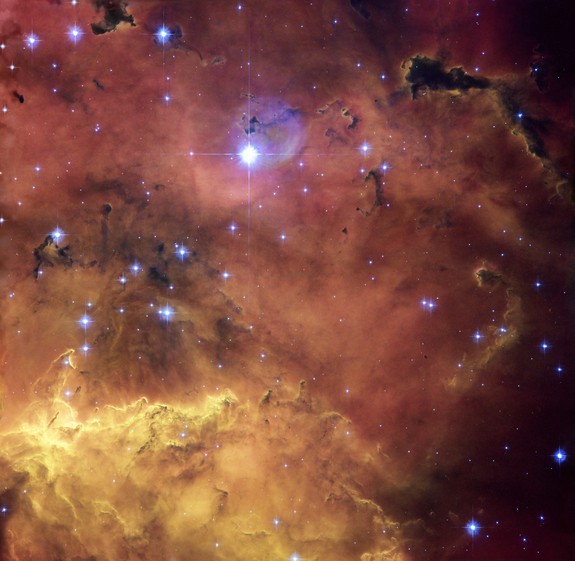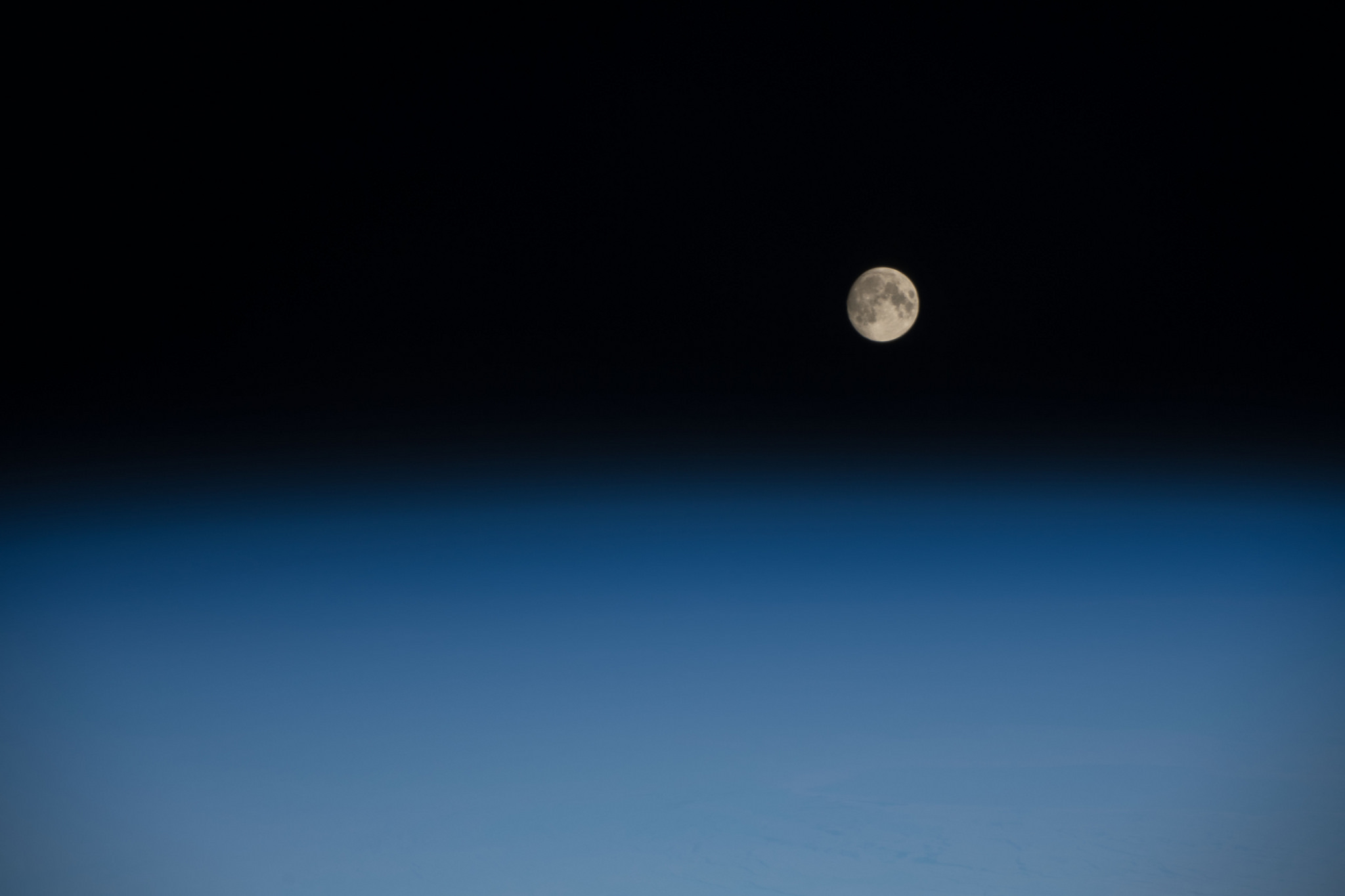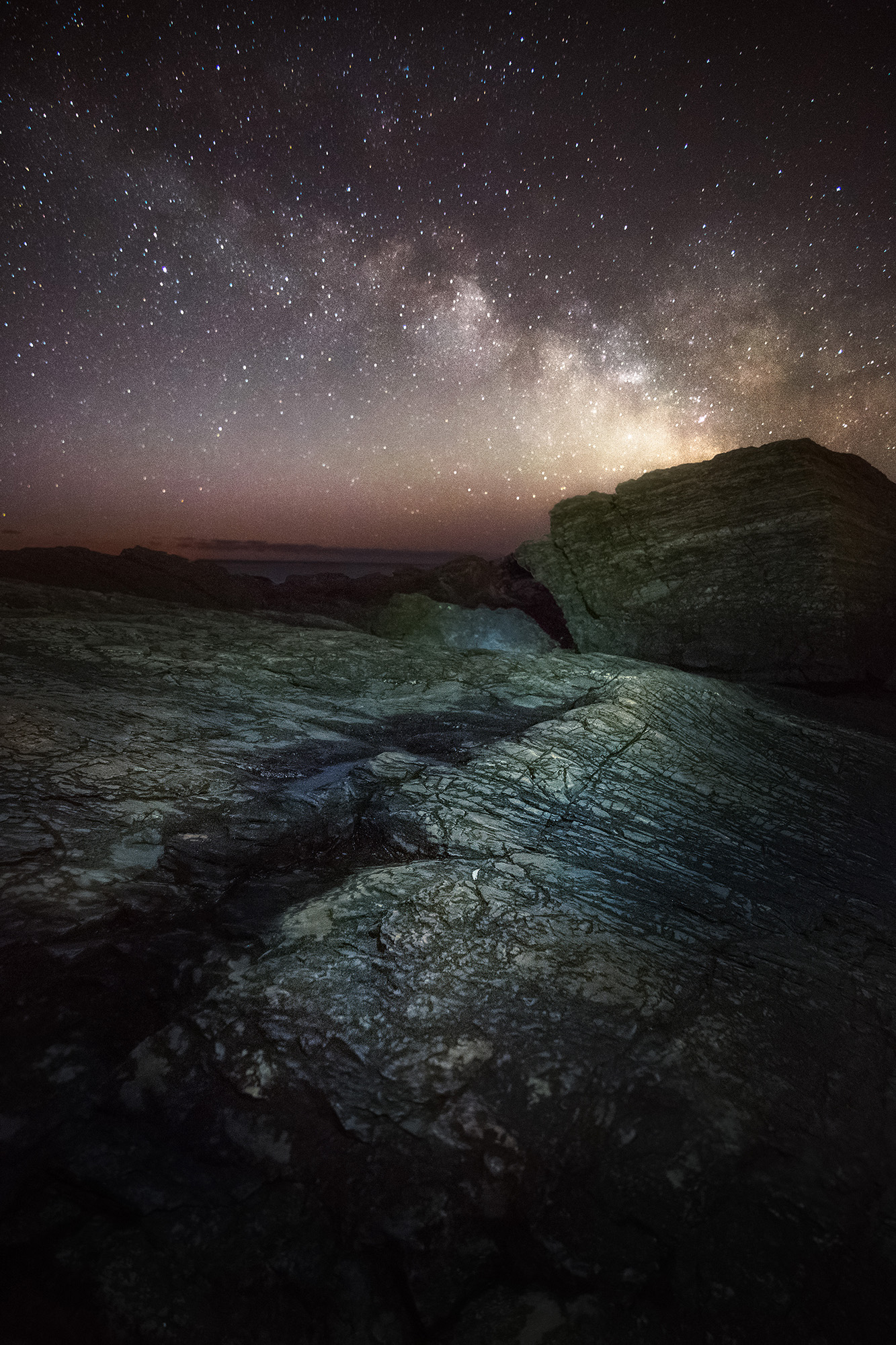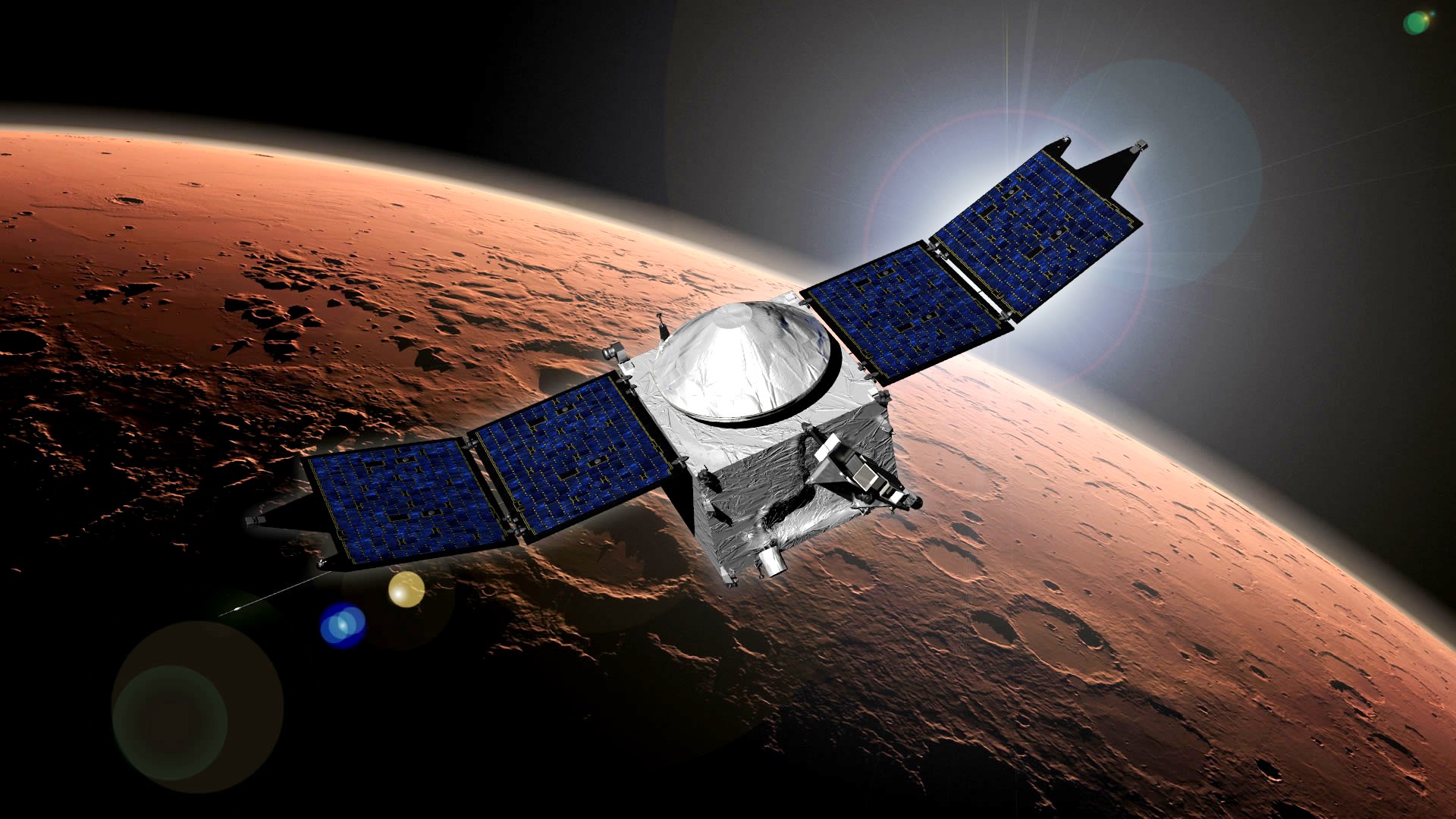Space Image of the Day Gallery (March 2018)
Image of the Day Archives
For older Image of the Day pictures, please visit the Image of the Day archives. Pictured: NGC 2467.
Charting Ice in the Bering Strait
Thursday, March 1, 2018: This colorful image from the European Space Agency's Copernicus Sentinel-1 mission maps changes in the extent of sea ice in the Bering Strait, which connects the Pacific and Arctic Oceans between Alaska and Russia. The image combines three radar scans from Dec. 11 (shown in blue), Dec. 23 (red) and Jan.4 (green). Abnormally high water temperatures this season have caused this sea ice to melt earlier than usual, creating a large expanse of open water in otherwise ice-covered sections of the Bering Strait. — Hanneke Weitering
Stratolaunch Hits the Runway
Friday, March 2, 2018: The world's largest airplane, designed to transport rocket launchers and satellites bound for low Earth orbit, hit a new milestone last weekend. The Stratolaunch carrier aircraft conducted runway tests on Saturday and Sunday (Feb. 25-26) at the Mojave Air and Space Port in Mojave, California and achieved a taxi speed of 46 mph (74 km/h). Stratolaunch Systems Corp. aims to start test flights in 2019. — Hanneke Weitering
Venus, the 'Evening Star'
Monday, March 5, 2018: The bright planet Venus glows in the evening sky above the European Southern Observatory's Very Large Telescope in northern Chile. Pictured here is Auxiliary Telescope 1, one of four such telescopes that make up an astronomical interferometer at the observatory. — Hanneke Weitering
Putting TESS to the Test
Tuesday, March 6, 2018: NASA technicians test out the solar panels on the agency's new Transiting Exoplanet Survey Satellite (TESS) inside the Payload Hazardous Servicing Facility at Kennedy Space Center in Florida. Scheduled to launch next month, TESS will search for alien worlds orbiting nearby stars. — Hanneke Weitering
The Moon from Space
Wednesday, March 7, 2018: Astronauts at the International Space Station captured this view of the waxing gibbous moon from about 250 miles (400 kilometers) above the Earth. The photo was taken as the space station passed over the Indian Ocean southwest of Africa on Feb. 28, 2018. — Hanneke Weitering
50th Flight of the Falcon 9
Thursday, March 8, 2018: SpaceX launched its Falcon 9 rocket on a landmark 50th flight on Tuesday (March 6). The rocket lifted off from Florida's Cape Canaveral Air Force Station shortly after midnight and delivered the Hispasat 30W-6 communications satellite into low-Earth orbit 30 minutes later. This long-exposure shot show the rocket's curved trajectory as it soared into space. — Hanneke Weitering
Breaking space news, the latest updates on rocket launches, skywatching events and more!
On the Edge of the Gratteri Crater
Friday, March 9, 2018: This high-resolution image from NASA's Mars Reconnaissance Orbiter shows a portion of the Gratteri crater. Located in the Memnonia Fossae region of the Red Planet, Gratteri is a 4.3-mile-wide (6.9 km) rayed crater, which means that long linear features emanate from its center much like the spokes of a bicycle wheel. NASA engineer Kevin Gill rendered the image using data from the spacecraft's HiRISE camera. — Hanneke Weitering
Milky Way Rises Over Maine
Monday, March 12, 2018: The starry core of the Milky Way rises over the coast of Maine in this early morning view by astrophotographer Charles Cormier. "The winter months are a great time of year to see the stars as the air is cold and visibility is good," Cormier told Space.com. "The core the galaxy is visible for a short window of time before sunrise this time of year." — Hanneke Weitering
SDO Sees a Solar Eclipse
Tuesday, March 13, 2018: NASA's Solar Dynamics Observatory (SDO) watched a special total solar eclipse on Feb. 11, when the Earth crossed in front of the sun on the eighth anniversary of the satellite's launch. This eclipse was not visible from Earth. Thanks to the satellite's inclined geostationary orbit, which provides a continuous view of the sun, SDO experiences two such eclipses every year. This animated view of the solar eclipse shows the extreme ultraviolet radiation coming from the sun over the course of about an hour and a half. — Hanneke Weitering
The Big Dipper
Wednesday, March 14, 2018: The Big Dipper twinkles over the snow-covered Alborz mountain range in Iran in this image by astrophotographer Jeff Dai. Located in the constellation Ursa Major, the Big Dipper is one of the most easily recognizable asterisms in the night sky. Stargazers in the Northern Hemisphere can see it above the northeast horizon shortly after sunset this month. — Hanneke Weitering

Space.com is the premier source of space exploration, innovation and astronomy news, chronicling (and celebrating) humanity's ongoing expansion across the final frontier. Originally founded in 1999, Space.com is, and always has been, the passion of writers and editors who are space fans and also trained journalists. Our current news team consists of Editor-in-Chief Tariq Malik; Editor Hanneke Weitering, Senior Space Writer Mike Wall; Senior Writer Meghan Bartels; Senior Writer Chelsea Gohd, Senior Writer Tereza Pultarova and Staff Writer Alexander Cox, focusing on e-commerce. Senior Producer Steve Spaleta oversees our space videos, with Diana Whitcroft as our Social Media Editor.











